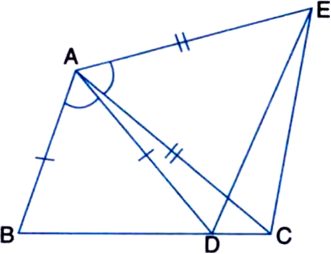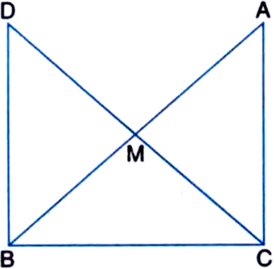 Short Answer Type
Short Answer Type

(i) ∆ABD ≅ ∆BAC
(ii) BD = AC
(iii) ∠ABD = ∠BAC.


Line I is the bisector of an angle ∠A and B is any point on I. BP and BQ are perpendiculars from B to the arms of ∠A (see figure). Show that:
(i) ∆APB ≅ ∆AQB
(ii) BP = BQ or B is equidistant from the arms of ∠A.

Given: In figure, AC = AE, AB = AD and ∠BAD = ∠EAC.
To Prove: BC = DE.
Proof: In ∆ABC and ∆ADE,
AB = AD | Given
AC = AE | Given
∠BAD = ∠EAC | Given
⇒ ∠BAD + ∠DAC = ∠DAC + ∠EAC
| Adding ∠DAC to both sides
⇒ ∠BAC = ∠DAE
∴ ∆ABC ≅ ∆ADE | SAS Rule
∴ BC = DE. | C.P.C.T.
(i) ∆DAP ≅ ∆EBP
(ii) AD = BE.

 Long Answer Type
Long Answer Type
(i) ∆AMC ≅ ∆BMD
(ii) ∠DBC is a right angle
(iii) ∆DBC ≅ ∆ACB![]()
 Short Answer Type
Short Answer Type
